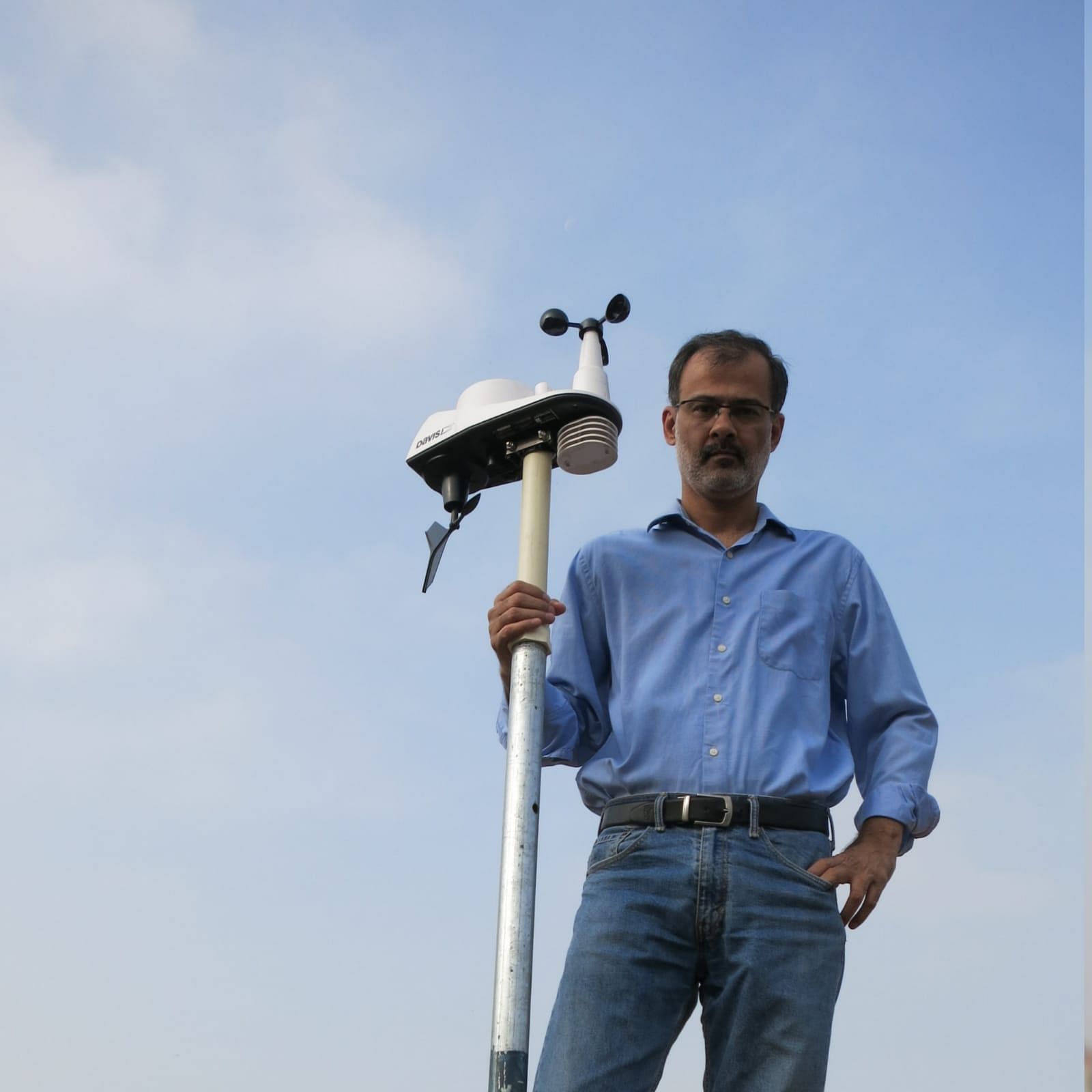
It is not just meteorologists who noticed a spike in the atmospheric pressure in India following the Tonga volcanic eruption over 12,000 km away. A few amateurs in Bengaluru also recorded the ‘shockwave’ on the private weather stations in their homes on January 15.
BNGWeather is a motley group of 25 hobby weathermen in Bengaluru. They are a mix of college students, businessmen, engineers and biologists, and techies in their late 40s. Strangely, there are no women in the group, they admit.
United over WhatsApp since 2016 and now on Telegram too, they follow weather patterns. Some forecast local weather trends and post on Twitter (18.9K followers). Some are ‘monsoon chasers’, zipping past the state on bikes to record seasonal changes. Some prefer cloudy skies.
“If I wake up to a hundred messages on the WhatsApp group, most likely the weather has turned bad — think floods or thunderstorms,” says Rahul Bedi, a software professional living in Whitefield, explaining when the group is most active. Except for the Tonga shockwave, described as 500 times more intense than the nuclear bomb dropped on Hiroshima, “Bengaluru weather has been pretty boring” for a while, he says.
Kasturi Nagar resident and engineering manager Praveen Chandrasekaran describes a ‘bad day’. “On January 15, at 8.34 pm, I noticed a dramatic spike in my barometer plot (The atmospheric pressure had hit 1,015 millibars). To rule out a glitch in my equipment and to corroborate, I checked with the group. They had seen the spike as well.” Weather stations in other parts of the world, as remote as Antarctica, had also picked up the abnormality unleashed by the underwater volcanic blast in Tonga in the Pacific ocean at 10.15 am IST.
The shockwave was travelling at approx 1,200 km per hour and lasted over India between 7.30 pm and 9.30 pm. “It reached Bengaluru 10 minutes after it reached Chennai,” Praveen recalls.
If Praveen posted his barometer reading on Twitter, geoanalytics professional Raj Bhagat P went a step further. He made an animation of the pressure change recorded by the Indian Meteorological Department (IMD) throughout the country.
When asked why he did not plot anomalies from the North-east and central India as much as the rest, Raj says, “IMD doesn’t have good coverage in these areas and it is a controversial topic.”
Variety of skills
Bengaluru has a spectrum of enthusiasts — some analyse publicly available meteorological data, some record local weather and can’t tolerate a single missed reading, some build equipment.
Rahul Bedi says he was the first in Bengaluru to instal a private weather station in 2013 because back then “IMD forecast was infrequent and not publicly available”. Now, three or four members own fully automated weather stations that upload and share data publicly for anyone to use, he informs. In 2016, he installed another weather station in his house in Kodagu to plan his trips because he often found the IMD forecast “inaccurate.”
“People can get started with a basic-level weather station and accessories for under Rs 10,000. These give inconsistent readings and don’t last long but are okay to build your interest. It is also possible to make your own station,” says Rahul.
Seasoned hobbyists like Rahul keep ‘backup weather stations’ if sensors break down. “I have invested up to Rs 2 lakh in the weather station setup in Kodagu, of which Rs 50,000-Rs60,000 has been towards power supply,” he says.
Join them?
Follow them on @BngWeather on Twitter and demonstrate your interest with comments and queries. Once they are convinced, they will invite you to join the closed group.